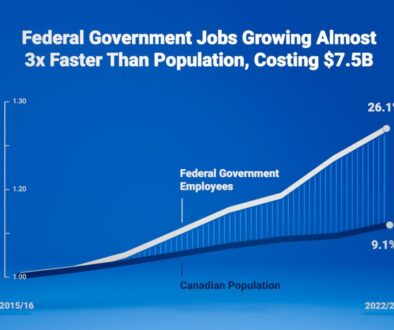BC Hydro
The Crown Corp. was originally designed to be a “natural monopoly”. This economic model is meant to provide a service to those customers who guarantee the debt of the corporation, all for the purpose of achieving
service at the lowest cost possible . The last CEO who believed in delivering this package to the citizens of BC was Norm Olsen (1970s+).
By the late 1980s there was a change in corporate culture , where BC Governments started to behave in ways that reflected “for profit” behavior. The star evidence first illustrating this hybridization was
Power Ex’s participation in the Enron led “combine” where citizens of California were scammed.
This was followed by an attempt to privatize BC Hydro by Gordon Campbell. A few of us managed to win that battle but the lust after owning a monopoly never disappeared. Following that the Government
decided that by having BC Hydro invite for-profit parties to apply for power producer contracts, guaranteed as to the certainty of multi year service contracts, the income certainty that comes with a contract with
a monopoly, would be welcomed by investors.
That must have been welcomed by the BC Government because one of the first contracts to be approved by BC Hydro and the BCUC was a plan to operate a generation plant at Duke Point, using natural gas as its input
energy. The evidence of cost to build, given by the developer, was $300 million. To our astonishment, the 25 year guaranteed annual minimum, when translated into a “present value” (that used the prevailing 10 year
Canada bond rate) gave a contract asset value of $500 million. Again , as defenders of the rate payers, we hired a lawyer to apply to a real court of law where we planned to cross examine BC Hydro executives as to
both the need and the generous terms of the contract. After we got the green light from a court you can’t imagine how fast it was for BC Hydro, the private developer and the Government to suddenly no longer wanted
this generation contract.
In response to this set-back the Premier then made all power producer contracts secret and I confirmed this by testing the BCUC by letter. Since then the size of private contracts to be paid by BC Hydro
customers has ballooned to more than $60 billion, so I am informed. A very important distinction you also need to process is that contractual obligations of the province and crown corps are not reported as
provincial debt.
Site C was considered in the 1980s was did not get the support of need. All through the past 30 years BC Hydro has been presenting an exaggerated out-look for electricity need. In 2013 the expectation for
demand for 2025 was 25,000 gigawatt hours greater than actual total sold . The degree of forecasting error needs context , Site C is supposed to produce 5,100 gigawatts per year. This dimension of error of error is
not accidental but by design. That it why I call BC Hydro a hybrid monopoly where all BC citizens are guaranteeing all debt and contractual obligations , including amounts that have nothing to do with their needs.
What would please me is the division of BC Hydro into two units where the first uses the natural monopoly model for BC only customers and a second stand alone business that has to make it’s way, like all private
investor corporations, rather than free-riding on the credit worthiness of unsuspecting BC citizens and businesses.

To help comparisons between need and want here are numbers from last two years, annual BC Hydro statements. In 2023 “domestic” revenues were $5,982 million and for “Trade” $2,496 million. “Domestic” is need or affordable and “Trade” is non domestic (out of province). In 2024 “Domestic” decreased to $5,504 million and “Trade” to $1,627 million , a combined total drop in gross revenue of 16%. There were people, not domestic, using 23% of total.
Next it is useful to compare the reported sales, measured in gigawatt hours, to see if the relationships match incomes.
These values are from page 28 of the last annual report. For “domestic customers” only, the amount for 2023 was 59,880 GWHRS then in 2024 it was 55,413 GWHRS a decrease of 7.5%. In the “Trade” category the numbers were 27,141 GWHRS in 2023 and 20,985 GWHRS in 2024 or a decrease of 22.7 %.
From the two most recent years there was a total decrease in GWHRS sold of 12.2% less with the largest portion of the reduction coming from the “Trade” category. which was 21% of the 2024 total GWHRS sold.
The most recent numbers posted by BC Hydro indicate a shrinkage of “domestic” demand and an even a larger shrinkage of demand by customers outside of BC. This is the exact opposite to the narrative being used by the BC government and BC Hydro. A growing population is the public story both use but it has not translated into actual GWHRS bought by either type of customer. The most recent call for private power producers was on based on fiction , not real need, suggesting deliberate deception.
Historically speaking, the “domestic” demand has been stuck in the low to mid 50,000 GWHRS for a couple of decades but because of politicians wanting to play big business investors, BC Hydro has been branching out into the for-profit, “want” world. This is not being done objectively, because those making investment decisions had no personal money at risk, only BC citizens do. Now if someone else created some charts showing debt and financial obligations totals for BC Hydro, the picture would even be clearer.
We have to see the buyer’s division of BC Hydro into “domestic” customers, who are getting their electricity from a monopoly and “Trade” ,who are best described as commodity ,open market buyers.
This only matters when it comes to who has full accountability for debt and/or contractual obligations for the deployed capital, needed to finance building and operating costs. The present BC Hydro financial construct does not hold debt/financial obligations separate, but co-mingles, making a total blurring of financial responsibility, unlike the two part character of who are the buyers of electricity..
To frame this in terms of today, I am showing you next numbers taken from BC Hydro’s 2023 and 2024 annual reports. Total reported GWHS sold in 2023 was 87,021, 31% from trade and 69% from domestic. (Note the large proportion sold to other than domestic customers who carry no responsibility for debt and financial obligations. )
Now for 2024, the total sold was 76,398 GWHRS, a 12.6 % decrease in total sales. Sales to the domestic, monopoly customers decreased by about 7.5 % , year to year, suggesting there was monopoly buyer resistance due to general unaffordability. This is referred to as demand elasticity. At this point it helps to remember that for a monopoly, the seller sets the price. and the buyer is the taker of the price. Next is the sales record to Trade customers. The volume of GWHRS sold in 2024 was down to 20,985 , resulting in a 23 % decrease in the commodity sold to non-monopoly customers. This decrease in sales volume was also matched by a -16 % decrease in revenue per GWHR. Trade buyers are price setters , not price makers.
These differences in business outcome frames the realities of selling to customers of a monopoly and customers in an open commodities market. These distinctions mostly matter when the customers of the monopoly are accountable for all capital and operating costs for both types of buyers. Now you know why BC Hydro is seeking rate increases , it is mostly because their boards and executives wrongly thought that the pricing options they had with domestic buyers would be transferable into the world of commodity pricing.
The BC Government made the same mistake in the 1990s regarding coal pricing, and since they failed to learn from this experience, we are doing it again with electricity and will do it with natural gas. This process is what destroyed almost all countries in South America, as you can see today with the migration numbers, financial numbers for central bank rates and 10 year bond yields.
Is it really a mistake or a cruel plan?
EA, DB



